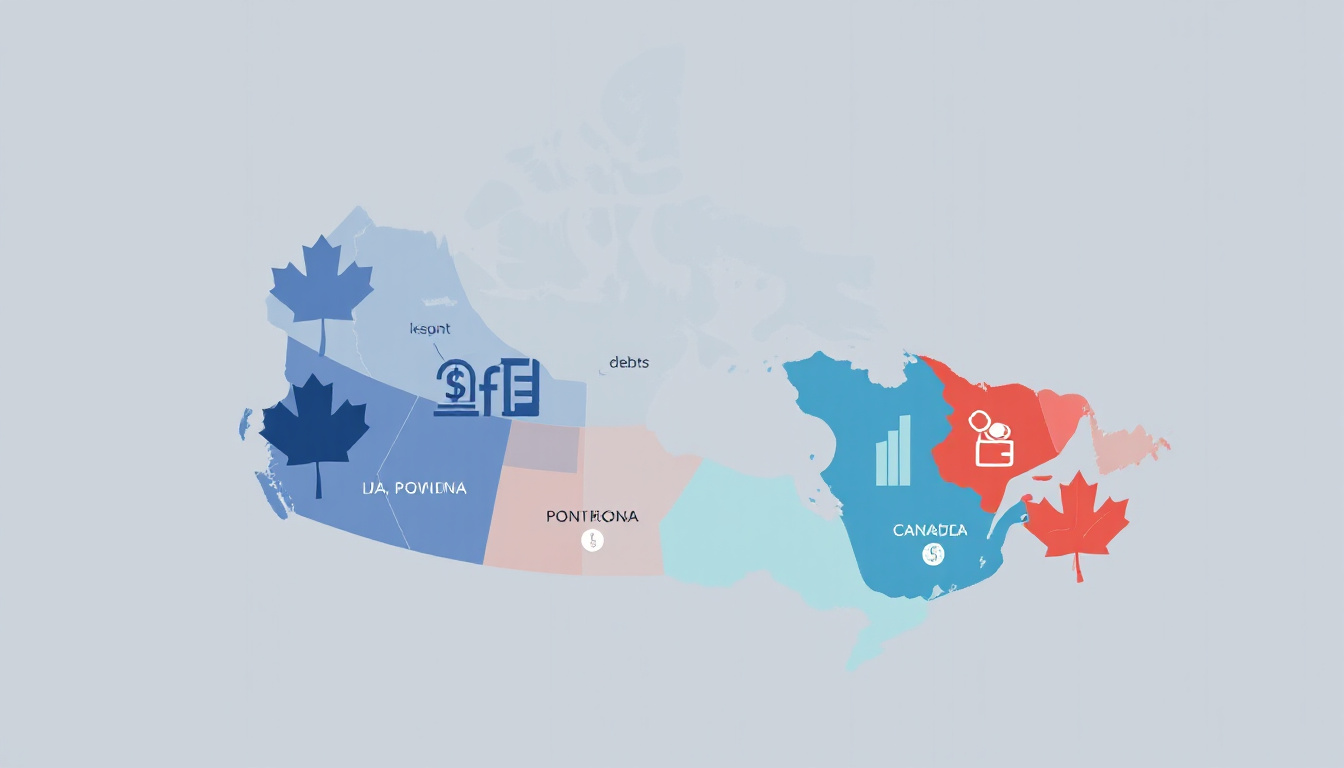In 2025, the average debt by province in Canada is projected to reach approximately CAD 73,300 per household, highlighting significant regional disparities in financial health across the country. This statistic is crucial for understanding the various economic challenges faced by Canadians as different provinces report varying levels of debt. For instance, provinces like Ontario and British Columbia are expected to have higher averages due to the cost of living and housing prices. Meanwhile, regions such as Saskatchewan and Newfoundland and Labrador may report lower averages, revealing the diverse economic landscapes in Canada. This article will provide a comprehensive overview of the average debt trends in Canada by province, exploring the factors influencing these debt levels and offering projections for the future of Canadian debt management.

Key Takeaways
- Average debt levels vary significantly across Canadian provinces in
2025. - Factors such as income, cost of living, and economic growth heavily influence provincial debt.
- Debt management strategies must consider regional economic disparities to be effective.
- Future projections indicate that provincial debt trends could impact national economic stability.
- Understanding these trends is essential for policymakers to address financial challenges effectively.
Overview of Average Debt Trends in Canada
In 2025, the average debt per household in Canada is projected to reach approximately CAD 75,000, highlighting significant variances across provinces. For instance, households in British Columbia are expected to bear the highest average debt at CAD 90,000, while those in Quebec might face an average of CAD 65,000. This trend underscores the growing financial pressures on Canadians, with rising costs of living and stagnant wage growth contributing to increased reliance on credit and loans. Data from Statistics Canada indicates an upward trend in household debt that often correlates with regional economic conditions, making it essential to assess the specifics of average debt by province in
2025. As debt levels continue to climb, understanding these disparities is crucial for implementing targeted debt relief strategies.
Provincial Breakdown of Average Debt in 2025
As of 2025, the average debt by province in Canada is projected to reach approximately CAD 85,000 per household. This staggering figure reflects the rising levels of consumer debt across the country, with provinces like Ontario and British Columbia showing the highest averages, around CAD 95,000 and CAD 90,000 respectively. Such stark averages emphasize the financial pressures facing Canadian families, particularly in urban areas where housing costs have skyrocketed. In contrast, provinces like Newfoundland and Labrador report lower averages, approximately CAD 70,000, indicating regional disparities in debt accumulation. This data is crucial for understanding the growing financial burdens on Canadians, stemming from not just mortgages, but also credit cards and personal loans. For more detailed information, references can be found in reports by Statistics Canada and the Bank of Canada regarding household debt trends.
‘Debt is the slavery of the free.’ – Publilius Syrus

Factors Influencing Debt Levels by Province
In 2025, the average debt by province in Canada highlights significant regional disparities, with some provinces exhibiting notably higher levels. For instance, British Columbia is projected to have an average household debt of approximately CAD 80,000, making it one of the highest in the country. In contrast, households in Quebec may average around CAD 58,000 in debt. This variation is influenced by several factors, including the cost of living, housing market fluctuations, and provincial economic conditions. The Bank of Canada reports that rising interest rates and increased borrowing costs are contributing to these debt levels, particularly impacting provinces with higher housing costs. According to Statistics Canada, approximately 60% of Canadians report feeling stressed about their financial situation, further highlighting the urgent need for debt relief options tailored to regional challenges. Understanding these dynamics is crucial for addressing the issue of consumer debt effectively.
Future Projections and Implications for Canadian Debt Management
In 2025, the average debt per household across Canada is projected to reach approximately CAD 78,000. This figure varies significantly by province, with households in British Columbia carrying an average debt of about CAD 100,000, whereas those in Quebec may average around CAD 65,000. Understanding these numbers is crucial for policymakers and financial advisors as they address the implications of growing debt levels on personal finance and economic stability. According to a report by the Canadian Bankers Association, increasing debt levels raise concerns about household financial health and potential defaults, emphasizing the necessity for effective debt management strategies tailored to each province’s economic landscape.
